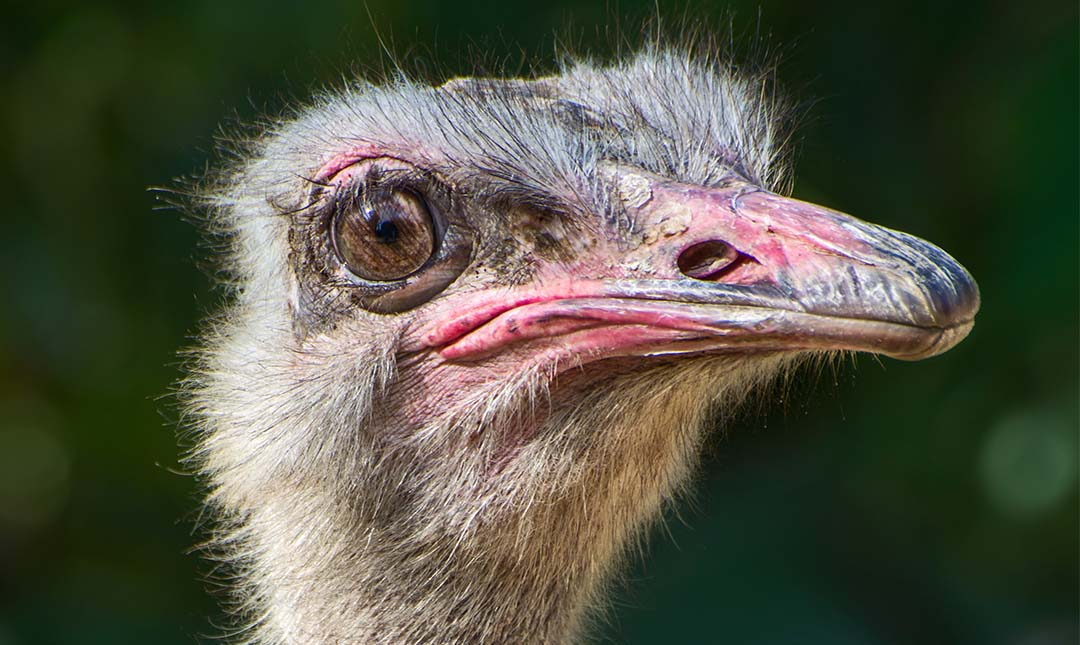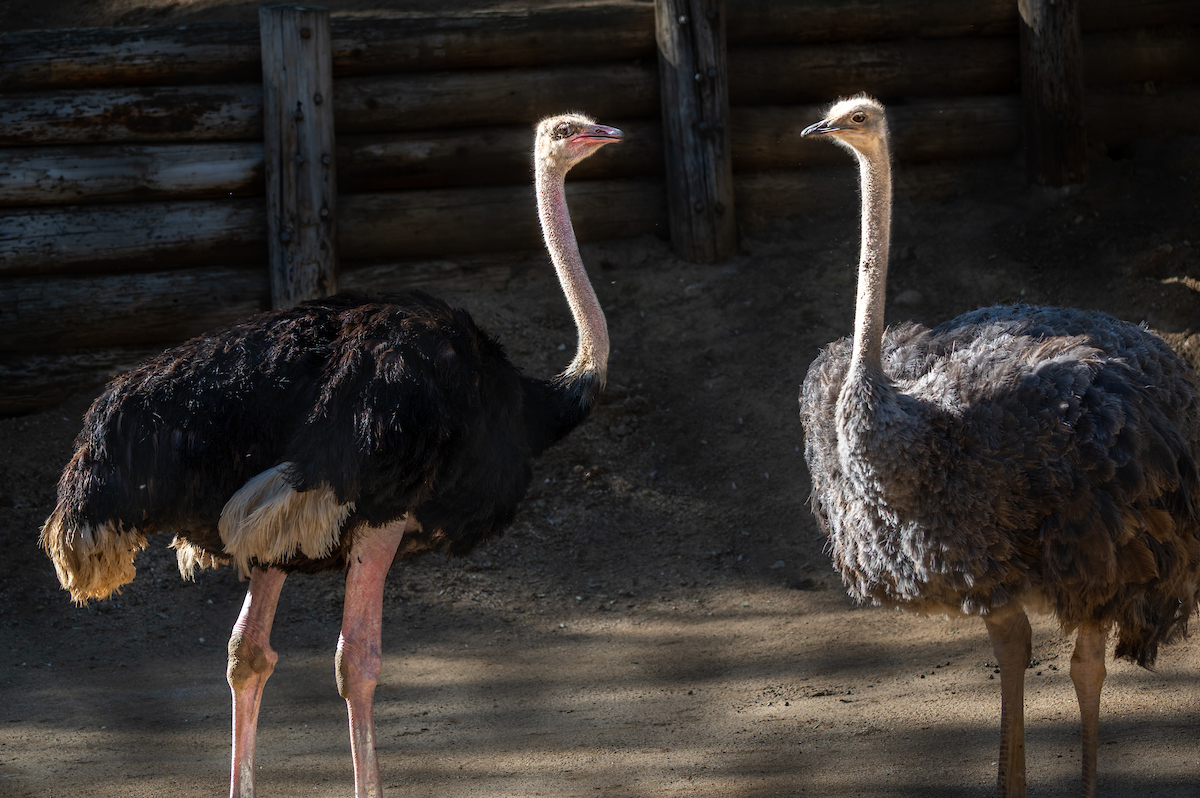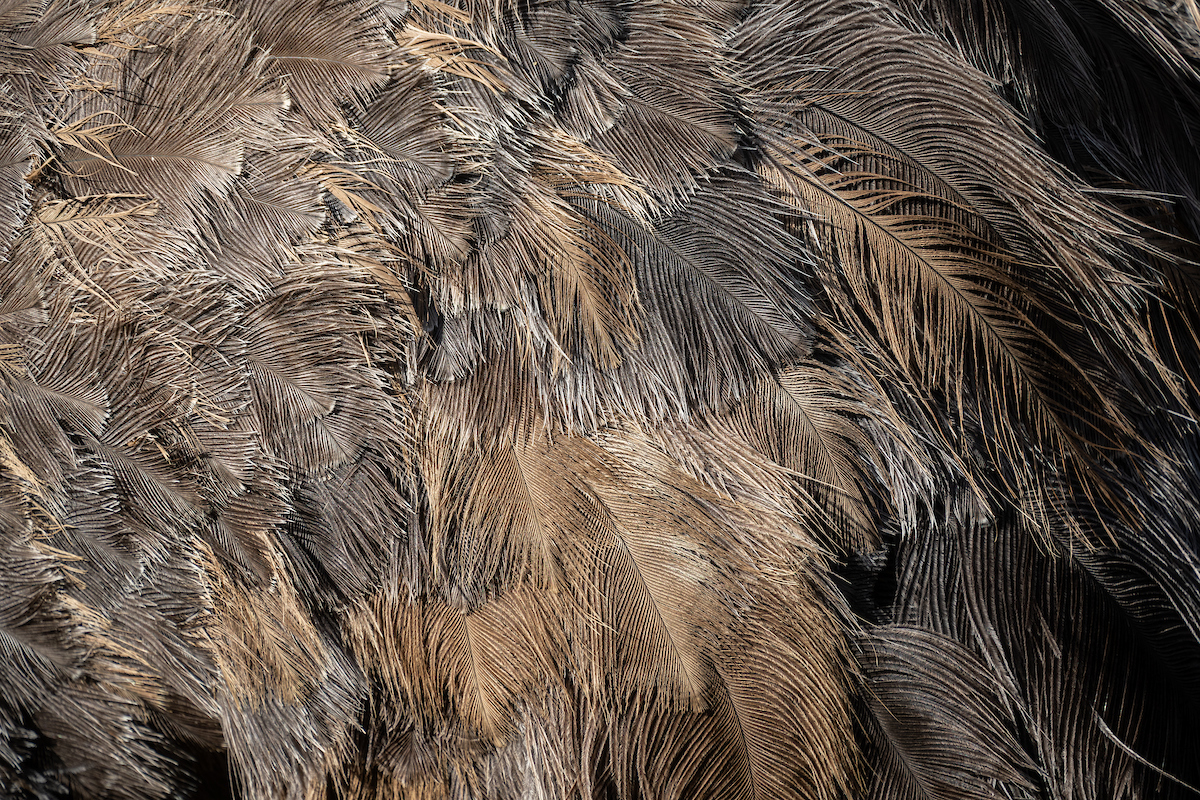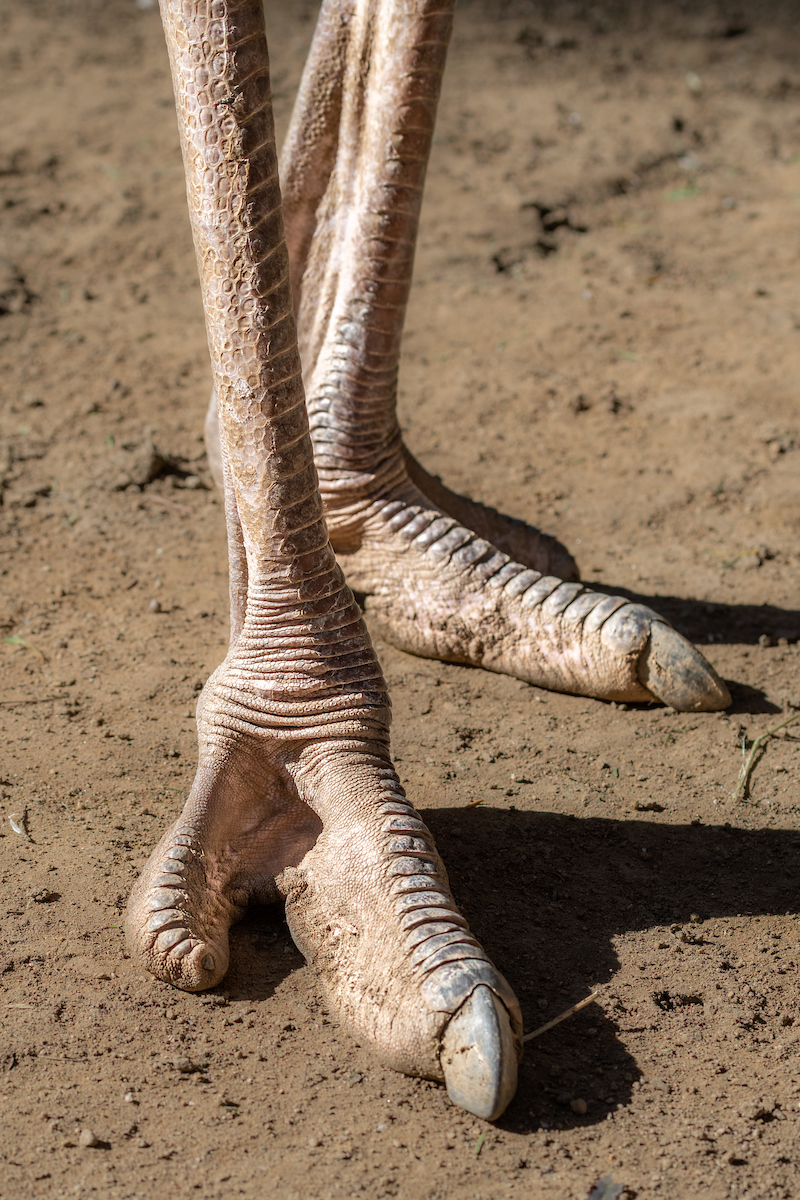About
Ostriches, the world’s largest and heaviest birds, are unable to fly, but have wings. Why? They evolved from flighted ancestors. The birds use their soft, loose feathers for balance when running, for courtship displays, for protecting their eggs and hatchlings, and to warm up or cool down. Ostriches can sprint at speeds of up to 40 miles per hour and can take huge strides as long as 15 feet. The large inner toes on their feet bear formidable claws, which can be used as a weapon when the bird is threatened. Cornered ostriches can kick hard enough to kill a lion.
Ostriches are nomadic and live in groups that range in size from five to 50 or more birds. They are often accompanied by zebras or antelopes, which kick up insects and disturb rodents for the ostriches to hunt. In return, the ostriches, with their keen hearing, huge eyes, and great height are able to warn other animals of impending danger.
Ostrich mating and egg laying occur shortly before the start of the rainy season so that food will be available for the newly hatched chicks. After a courtship dance in which the male bows and waves his feathers toward the female, he will mate with a dominant hen and several minor hens. Each hen lays two to ten eggs in a communal shallow nest that has been excavated by the male’s powerful legs. Amazingly, the dominant hen can detect her own eggs and deposits them in the center of the nest while pushing aside other eggs (which may then not receive adequate incubation). Ostrich eggs are the largest of all eggs, nearly six inches long and weighing about three pounds. The dominant hen sits on the eggs during the day, when her lighter feathers blend in with the surrounding grassland, while the male incubates the eggs at night when his dark feathers make discovery by predators more difficult. Hatching after 40 to 42 days, chicks soon learn to follow the legs of the male ostrich that incubated them.
Ostrich populations are declining. Originally threatened for the plume trade and egg collection, their main threat is now habitat loss.
Habitat
Ostriches are found in the savannas and deserts of central and southern Africa. They prefer areas with short grass, which provides food and allows them to see long distances.
Diet
Leaves, roots, flowers, and seeds form the bulk of the ostrich diet, although these omnivores also feast on insects, lizards, and rodents. Because ostriches do not have teeth, they swallow small stones that help grind the swallowed food in their gizzards.
Physical Characteristics
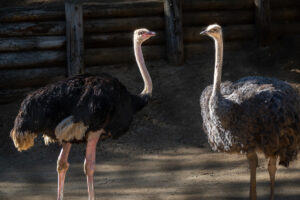
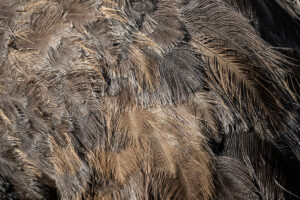
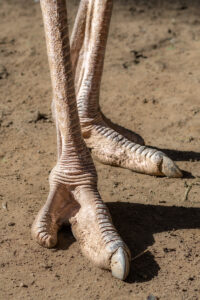
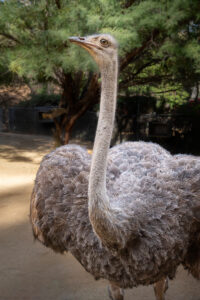
Feathers of adult males are primarily black with white plumage on their tails and wings, while females are grayish brown. The male ostrich is 6–9 feet tall and weighs 220–300 pounds while females are somewhat smaller. Lifespan is 30–40 years in the wild and up to 50 years in human care.

